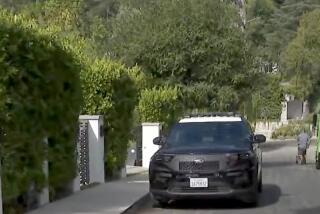Beating Crime With Community Policing : * Garden Grove Program Has Officers, Residents Working Together to Make a Difference
In the high-tech world of some police work, the cops stay at the station until the call for help gets phoned in, then roll to the scene with tactical squads, or battering rams, or flash-bang devices, or something that will get the criminals to surrender--after the crime is done.
Community policing tries to prevent crime. It has been popular in communities across the country at various times, with several Orange County cities trying it in recent years. In Garden Grove, for instance, Officer Mark Elizondo walks a beat on Stuart Drive, trying to get a landlord to clean the brackish swimming pool in the apartment complex, organizing a job fair for residents and holding a neighborhood cleanup and barbecue.
Community policing involves one or two officers patrolling a small area, seeking help from residents, trying to calm their fears and cleaning things up. Police said broken street lights and graffiti send a message that a neighborhood is an easy mark. Clean it up and residents start to feel better. They are more likely to call police if they see something wrong, and support them when they arrive.
It is a good idea, but it is expensive because it is so labor-intensive. It is also a concept that waxes and wanes in popularity among police chiefs, and among the beat officers themselves.
Officer Pat Ryan initiated a pilot program for community policing in Garden Grove, patrolling the Palm Vista neighborhood for five months last year. He said he was worried at the start that it would be a program that was “soft on crime.” Police in other cities have sometimes complained that the program made them too much like social workers, too little like forces of law and order. But Ryan has changed his tune.
He said that showing residents there are more good folks than bad, and reminding them that they have responsibilities like cleaning up trash, built a sense of community and mutual respect among police and civilians. The experience rekindled his enthusiasm for police work, Ryan said, especially since he knew he had community support.
Garden Grove is getting ready to add three new two-officer teams to the community police beat, helped by a $593,533 federal grant last December. The city was the only one in the county to get a grant, though several applied. One reason it qualified was its high crime rate.
Community policing will not end crime. But it is better to prevent lawbreaking than to try to sweep up afterward. It is also valuable in reminding residents that they must be part of the solution.
More to Read
Sign up for Essential California
The most important California stories and recommendations in your inbox every morning.
You may occasionally receive promotional content from the Los Angeles Times.










